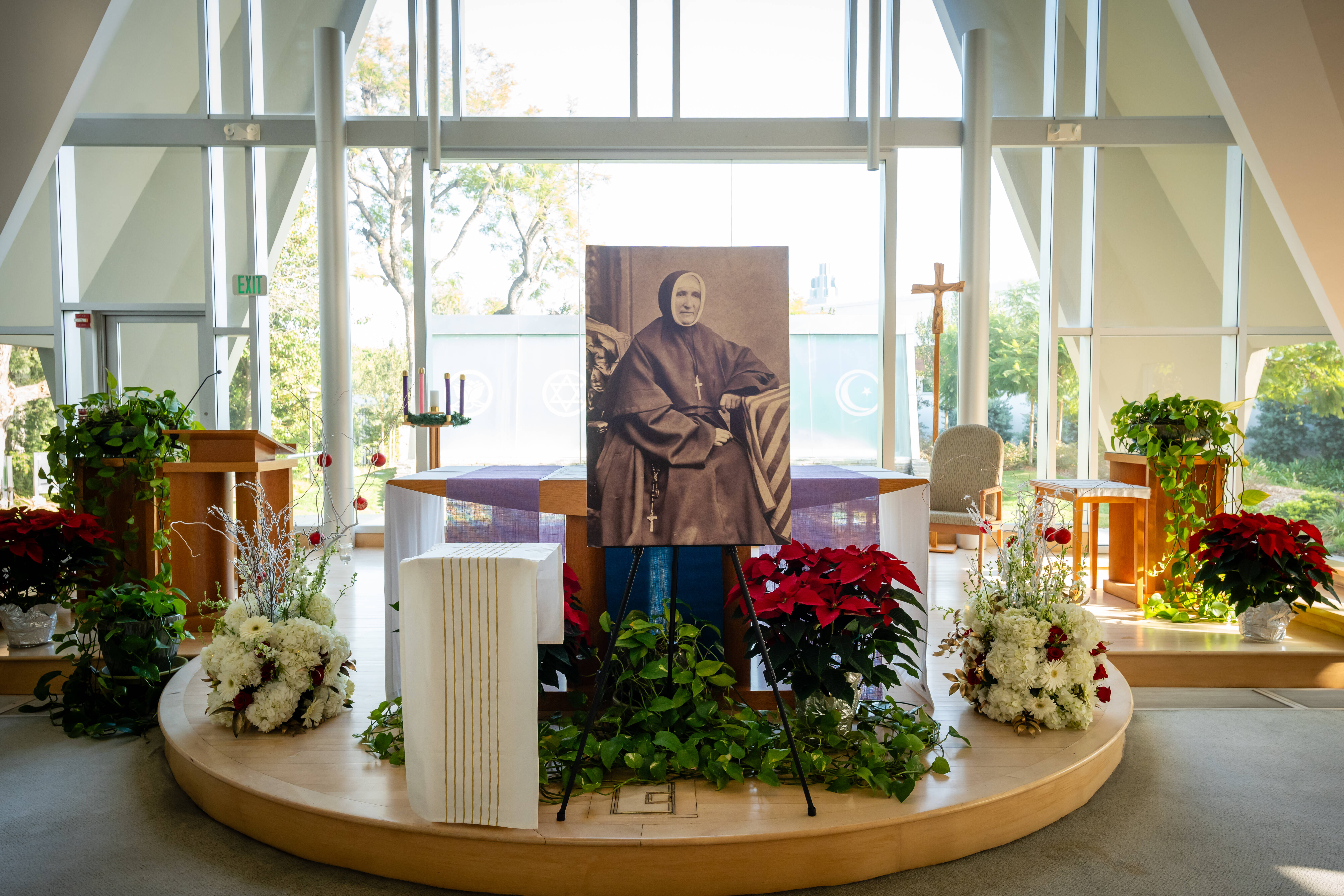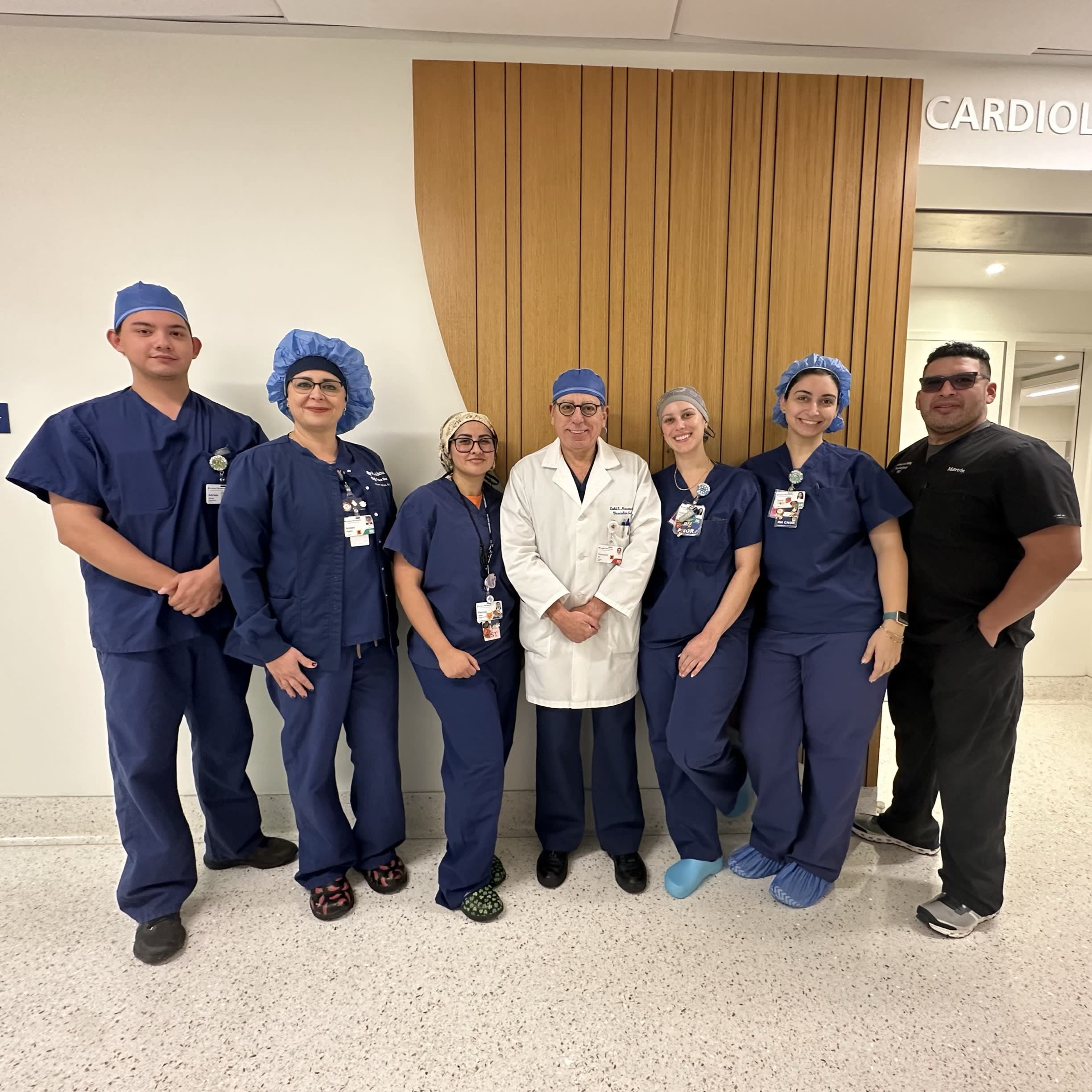Like a miracle
When Oak Park resident Beverly Biggerstaff started experiencing immobilizing leg pain last summer, she knew something was seriously wrong. “It was bizarre. I just woke up one morning and couldn’t walk,” recalls Biggerstaff, age 75. “It was a terrible, debilitating pain—I was crying.” She soon discovered that walking bent over, looking at her toes, was the only way to alleviate the excruciating pain in her leg. On the verge of retirement from a 32-year career as a kindergarten teacher, Biggerstaff was looking forward to having more time to do the things she loves. This includes serving as a docent at the Getty Museum and visiting family in France. Her plans, however, came to a halt when she was diagnosed with a complex spinal disorder, which was causing her leg pain.
EMBRACING SURGICAL INTERVENTION
Biggerstaff’s treatments began conservatively, with things like rest and then epidural injections. Unfortunately, the unbearable pain persisted, and she soon realized that surgery might be her only option. Michael Neveux Photograph When conservative treatments fail to provide relief, spinal surgery may be necessary to improve a patient’s quality of life. For Biggerstaff, the prospect of a complex spine surgery made her fearful that she would have to endure a prolonged recovery time and potential complications. These fears subsided, however, once she met Justin D. Cohen, M.D., a highly skilled neurosurgeon at Providence Cedars-Sinai Tarzana Medical Center. Dr. Cohen’s expertise in using minimally invasive techniques gave Biggerstaff hope that she would soon be able to avoid invasive procedures and resume her normal, active life without extensive downtime. Minimally invasive spine surgery (MISS) has become a popular option for patients because of its many benefits over traditional open spine surgery techniques. Open spinal surgeries involve making large incisions and dissecting muscles, which lead to longer recovery times and more postoperative pain. With minimally invasive techniques, surgeons can now use much smaller incisions, causing minimal disturbance to surrounding tissues while achieving successful results.
After enduring three agonizing weeks of pain and relying on her daughter, Emily, who flew in from Paris to provide care, Biggerstaff was finally scheduled for surgery in the fall. During her consultation, Dr. Cohen reviewed her scans showing her the disc herniation at L4–L5 (the two lowest vertebrae of the lumbar spine) and showed her the tiny tube he’d use to remove the loose fragments that were compressing the nerve root. While listening to Dr. Cohen, Biggerstaff was eager to proceed. “I’m like, ‘Let’s get rid of the pain! I can’t be incapacitated anymore.’ ”
THE MISS SURGERY
Dr. Cohen performed a minimally invasive lumbar discectomy on Biggerstaff, a procedure that involves removing the herniated disc that has been causing nerve compression. Using an X-ray for accuracy and a microscope for visibility, Dr. Cohen made a small half-inch incision. He then carefully removed a portion of the ligament and the lamina— the protective bony arch that covers the spinal cord—to access the herniated disc. This allowed him to extract the disc and alleviate the pressure on her nerves.
“A disc is kind of like a jelly doughnut,” explains Dr. Cohen, “with a tougher fibrous layer on the outside [annulus fibrosus] and a soft, jelly-like center [nucleus pulposus] that can shoot out if it’s compressed and push against nearby nerves.”
“So during surgery, you’re not completely removing the entire disc, but just the loose fragments,” he says. “The outer layer can have a tear, and that’s what causes the disc fragment to leave the disc space or to bulge out.”
Another of the many advantages of MISS is the reduced risk of complications, including reherniation. Dr. Cohen explains that, along with decreased blood loss, less muscle dissection and reduced operative time, the precise techniques employed in MISS also lower the chances of leaving behind residual disc material. As a result, patients experience a smoother recovery process.
“The true benefit [of MISS] is that it allows patients to recover quicker and have less incisional pain,” he says.
Dr. Cohen notes that not all complex spinal disorders can be managed through MISS—it depends on the pathology and the goal of the surgery—but he indicates that a broad spectrum of conditions can be effectively treated through minimally invasive techniques.
A SUCCESSFUL RECOVERY
The surgery was successful, Dr. Cohen says, and Biggerstaff “did extremely well” after the operation. She agrees, saying she experienced immediate relief and was able to stand upright and walk again the same day. “It was like a miracle.”
Biggerstaff wasted no time returning to her passion for teaching kindergarten the same week as the surgery, though she has since retired. Although she had to delay her trip to France for the surgery, she was able to visit her daughter and grandchildren there over Christmas.
Still, she had to continue to take post-surgical precautions recommended by Dr. Cohen to minimize stress on her lower back. This included not lifting anything heavier than a half gallon of milk and asking for help with lifting luggage.
While it was difficult to resist the urge to pick up her grandchildren, Biggerstaff was thrilled at her ability to walk normally. “I was walking up and down the Métro in Paris,” she says with a smile. “And I walked five miles in the Louvre.”
THE TRUE BENEFIT [OF MISS] IS THAT IT ALLOWS PATIENTS TO RECOVER QUICKER AND HAVE LESS INCISIONAL PAIN.
NO REGRETS
In her retirement, Biggerstaff is staying busy with her three children and nine grandchildren. And after completing her training as a volunteer docent at the Getty Museum, she now leads tours of the antiquities collection at the Getty Villa, which she absolutely loves.
Biggerstaff’s advice to those facing the prospect of minimally invasive spine surgery is to not worry about it. She encourages them to instead think about a positive outcome and the potential of returning to an active and fulfilling life.
“I’m so, so happy that my surgery was minimally invasive, and I’m thrilled with the outcome,” says Biggerstaff.



